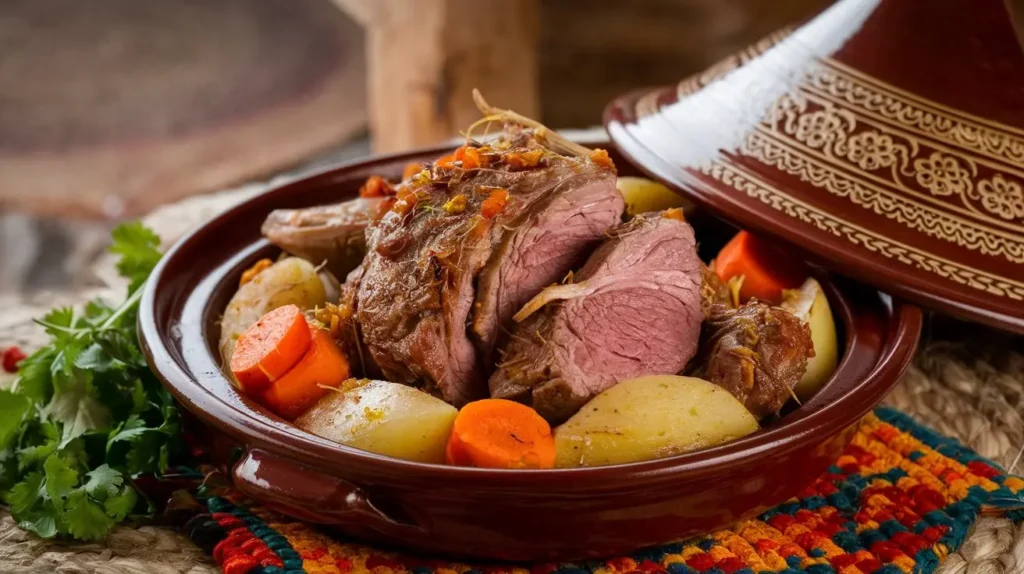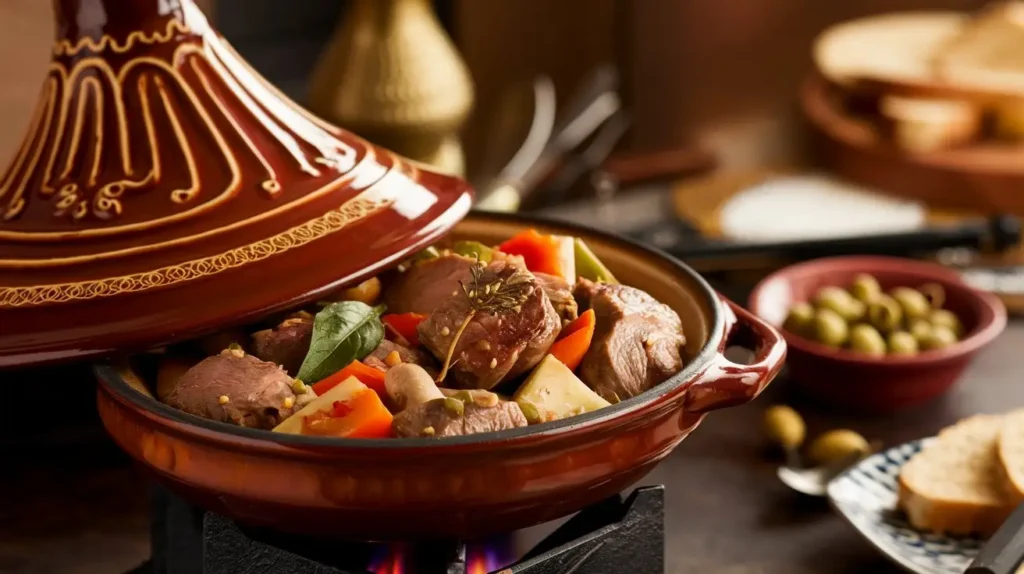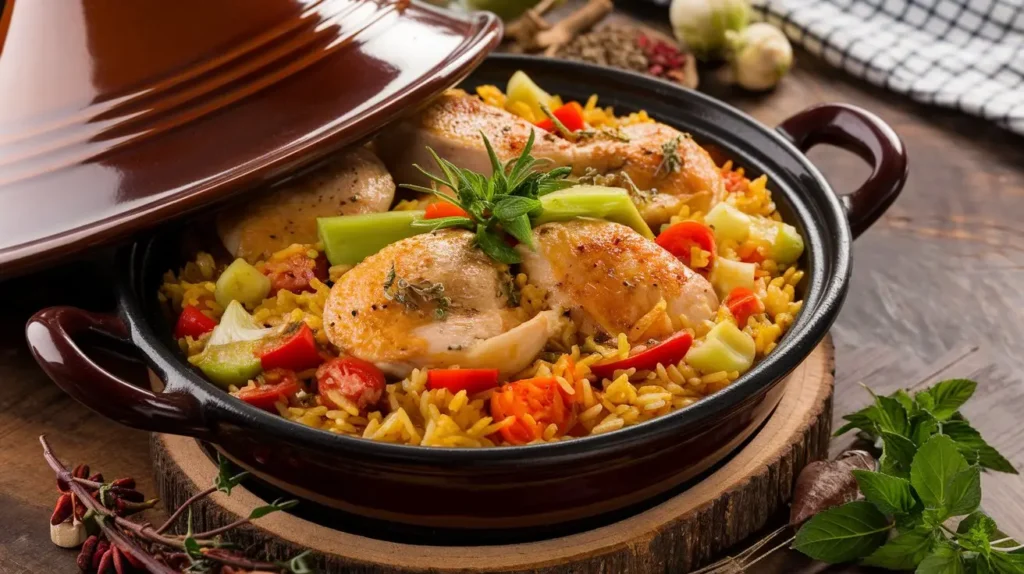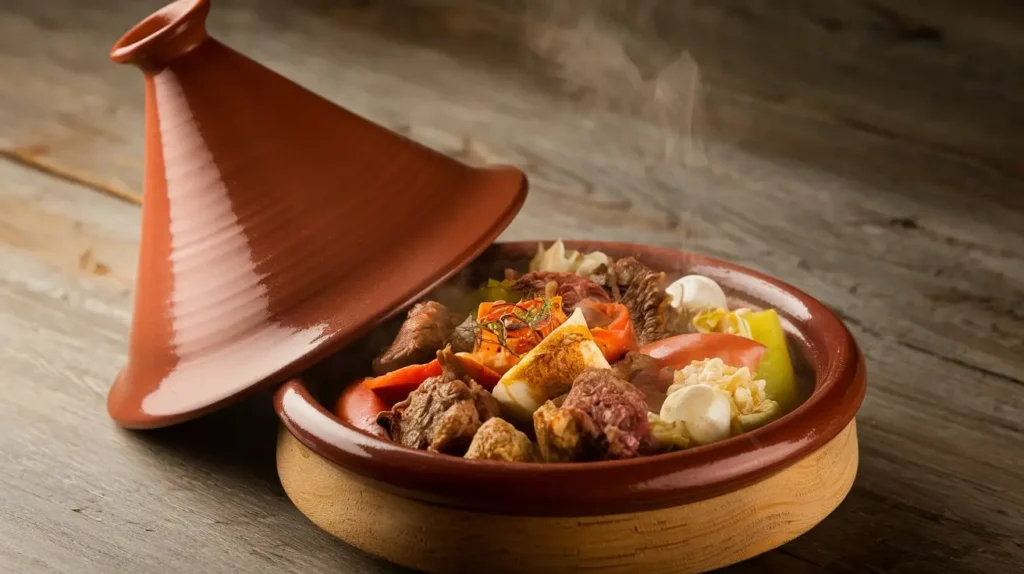HowToCook.news – Your Ultimate Guide to Delicious Cooking!
Tagine Pot: The Ultimate Guide to Moroccan Slow Cooking
Tagine Pot: The Ultimate Guide to Moroccan Slow Cooking
Table of Contents
Tagine Pot: The Ultimate Guide to Moroccan Slow Cooking

Introduction
A tagine pot is both a traditional North African cooking vessel and a delicious slow-cooked dish prepared within it. Originating from Morocco, the tagine is well-known for its unique conical shape, which allows steam to circulate, keeping food moist and flavorful. This versatile pot is used to prepare stews, meats, and vegetable dishes that are rich in spices and aromas.
In this ultimate guide, we’ll explore everything about the tagine pot—from its history and types to how to season, cook, and maintain it. Whether you’re a beginner or an experienced cook, this article will help you master the art of Moroccan slow cooking.
History and Cultural Significance of Tagine
The tagine dates back centuries and has deep roots in Berber culture. Initially, it was a practical cooking method for nomadic tribes, allowing them to prepare hearty meals using minimal fuel. Over time, the tagine evolved into an essential part of Moroccan cuisine, blending influences from Arabic, Mediterranean, and Andalusian culinary traditions.
Today, tagine cooking is a staple in Moroccan households and restaurants worldwide. The slow-cooking process helps develop complex flavors while preserving nutrients, making it a preferred method for healthy, flavorful meals.
Types of Tagine Pots
There are several types of tagine pots available, each with unique benefits and best-use cases.
1. Unglazed Clay Tagine
- Made from natural, porous clay.
- Enhances food flavor by infusing an earthy taste.
- Requires seasoning before first use to prevent cracking.
- Best for traditional slow-cooked recipes.
2. Glazed Clay Tagine
- Features a smooth, protective coating.
- Easier to clean than unglazed versions.
- Does not add an earthy flavor.
- Ideal for modern kitchens and everyday use.
3. Cast Iron or Aluminum Tagine
- Durable and compatible with modern stovetops.
- Can be used on induction, gas, or electric burners.
- Does not require seasoning.
- Best for those who want ease of use with a tagine-style experience.
4. Decorative Tagine
- Used mainly for serving rather than cooking.
- Often hand-painted with intricate Moroccan designs.
- Adds a touch of authenticity to the dining table.
How to Season a New Tagine Pot

If you have an unglazed clay tagine, seasoning it before first use is essential. This process strengthens the clay, prevents cracking, and enhances the cooking experience.
Step-by-Step Guide to Seasoning a Tagine
- Soak: Fully submerge the base and lid in water for 12–24 hours.
- Dry: Remove from water and let it air-dry completely.
- Oil: Rub the interior and exterior with olive oil.
- Bake: Place in a cold oven, set to 300°F (150°C), and bake for 2 hours.
- Cool: Turn off the oven and let the tagine cool inside before removing it.
- Repeat (Optional): Some chefs repeat the oiling and baking process to further strengthen the pot.
Once seasoned, your tagine is ready for use and will improve with each cook.
How to Cook with a Tagine Pot
Tagine cooking follows a low-and-slow method, which helps infuse flavors deeply.
1. Choosing Ingredients
A traditional tagine meal includes:
- Protein: Chicken, lamb, beef, fish, or chickpeas.
- Vegetables: Potatoes, carrots, zucchini, bell peppers.
- Spices: Cumin, coriander, paprika, cinnamon, turmeric.
- Liquids: Water, broth, tomato sauce, coconut milk.
- Dried Fruits & Nuts: Apricots, almonds, raisins (optional for sweetness).
2. Cooking Process
- Layer ingredients: Start with onions, garlic, and oil at the base to prevent burning.
- Add protein and vegetables in the middle.
- Sprinkle spices and seasonings evenly.
- Pour liquid (½–1 cup) to generate steam.
- Cover and cook over low heat for 1.5–3 hours.
- Do not stir too much; let flavors meld naturally.
Tagines can be served straight from the pot, preserving heat and authenticity.
Tagine Cooking Tips

- Use a heat diffuser if cooking on direct flames to prevent cracks.
- Always start with low heat and gradually increase.
- Do not place cold liquids into a hot tagine to avoid thermal shock.
- Let the tagine rest for 10 minutes after cooking to absorb flavors.
Care and Maintenance of a Tagine
A well-maintained tagine can last a lifetime. Follow these tips:
1. Cleaning Your Tagine
- Allow the tagine to cool completely before washing.
- Hand wash using warm water and mild detergent.
- Avoid dishwashers as they can damage the clay.
- For stubborn stains, soak with baking soda and water before scrubbing.
2. Storing a Tagine
- Store with the lid slightly ajar to allow airflow.
- If mold forms, scrub with a vinegar solution and dry thoroughly.
Best Tagine Recipes to Try

Looking to put your tagine pot to use? Here are some classic recipes:
1. Moroccan Chicken Tagine with Olives and Preserved Lemon
- Ingredients: Chicken, onions, preserved lemon, olives, garlic, cumin, turmeric, saffron.
- Cooking Time: 2 hours.
- Flavor Profile: Tangy, savory, aromatic.
2. Lamb Tagine with Prunes and Almonds
- Ingredients: Lamb, prunes, almonds, cinnamon, honey, ginger.
- Cooking Time: 3 hours.
- Flavor Profile: Sweet and savory with deep Moroccan spices.
3. Vegetarian Chickpea Tagine
- Ingredients: Chickpeas, tomatoes, carrots, zucchini, bell peppers, harissa.
- Cooking Time: 1.5 hours.
- Flavor Profile: Hearty, spiced, rich in texture.
Conclusion
A tagine pot is more than just a cooking vessel; it’s an experience that connects you with centuries of North African tradition. Whether you’re making a meat-based tagine, vegetarian stew, or modern adaptation, this pot brings out deep, complex flavors in every dish.
Investing in a good-quality tagine, following proper seasoning and maintenance, and experimenting with various recipes will allow you to fully enjoy the magic of Moroccan slow cooking.




